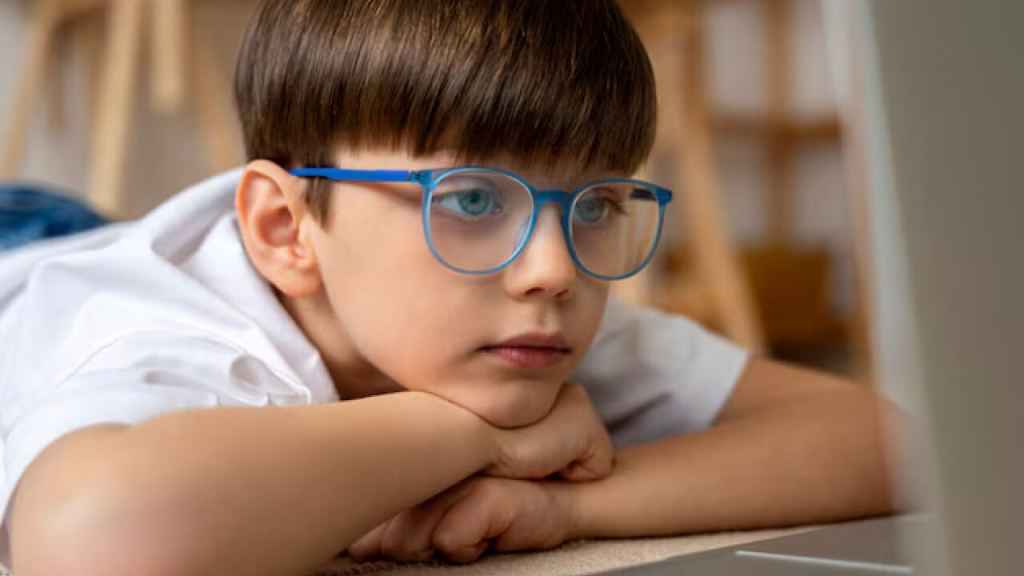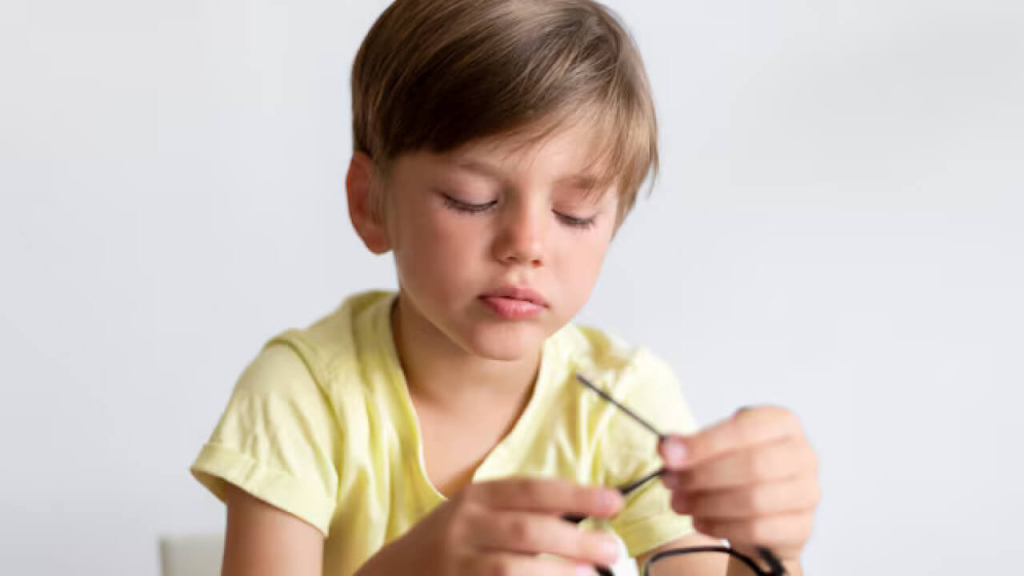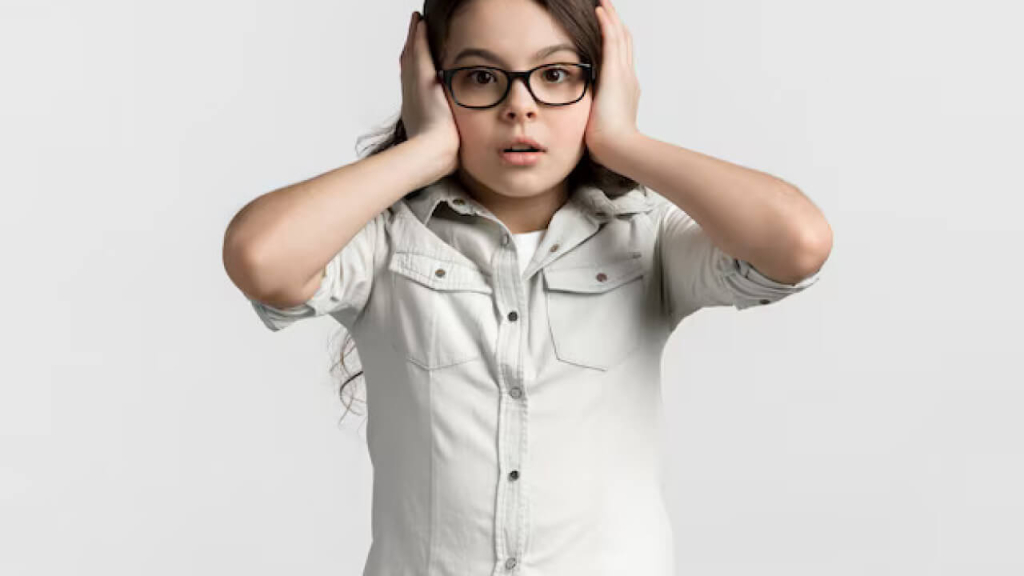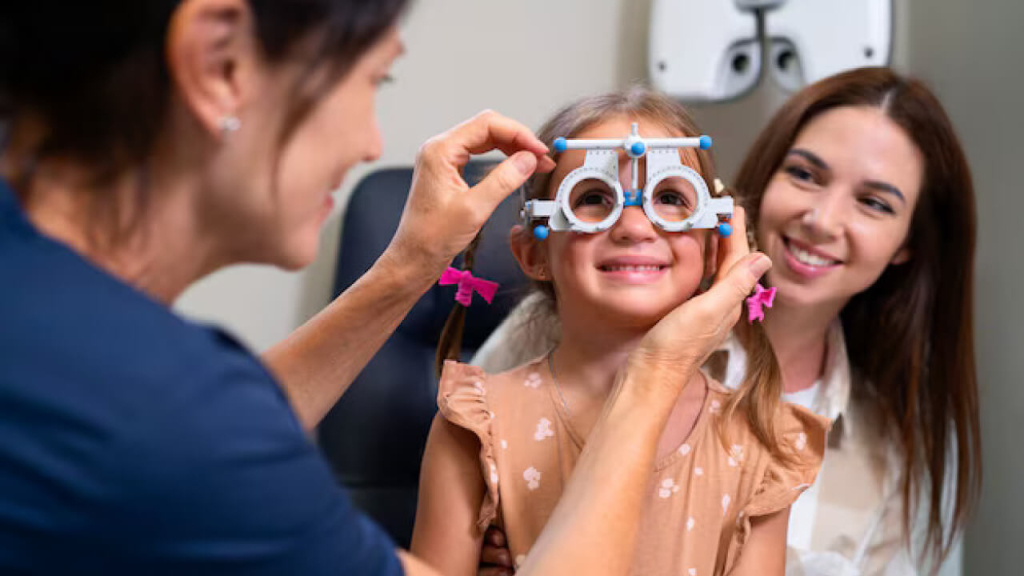
It’s not unusual to see children wearing prescription glasses or contact lenses these days. Most of these kids need these assistive devices to help avoid blurry vision and see distant objects. For many, however, these glasses or contact lenses are part of their management of myopia progression.
Preventing Nearsightedness in Kids
Recent research has revealed alarming trends in childhood myopia, or nearsightedness. According to a study by CNN, the number of people affected by myopia worldwide is projected to increase significantly to 40%, with nearly half of the world’s population expected to develop nearsightedness by 2050.
Myopia : Attributed to increased screen time, less time spent outdoors, and lifestyle changes
The study concluded that 1 in 3 kids have childhood myopia today. This rise is largely attributed to increased screen time, less time spent outdoors, and other lifestyle changes.
Childhood myopia can lead to severe vision problems in the future, such as eye strain, eye fatigue, retinal detachment, and cataracts (which may require invasive cataract surgery), making early intervention and appropriate treatment critical. This underscores the importance of families having to be proactive to help prevent myopia and myopia progression in children.
Read on to learn how families can prevent myopia in children, control myopia progression, and promote lifelong eye health.
Understanding Myopia in Children

Myopia is the medical term for nearsightedness. It’s a refractive error where distant objects appear blurry while near objects remain clear. It develops when the eyeball grows too long or the cornea is too curved.
Factors contributing to Myopia progression
It typically starts in school-aged children and progresses throughout childhood. Environmental factors like excessive near work (activities such as reading or using digital devices) and insufficient exposure to natural light increase the risk of developing childhood myopia.
When left unmanaged, myopia progression can result in high myopia, which is associated with severe vision problems like retinal detachment and cataract surgery.
Therefore, myopia prevention and early intervention strategies are crucial for reducing a child’s risk and ensuring a child’s vision is clear.
Tips for Nearsightedness Prevention for Children

Studies show that myopia in children can be inherited from parents, but some conditions and lifestyle practices pose an increased risk for kids to develop myopia.
To help prevent myopia in children and promote eye health, here are some tips:
1. Encourage Outdoor Time
One of the most effective strategies for nearsightedness prevention for children is spending more time outdoors. Research shows that exposure to natural light helps regulate eye growth and reduces the risk of developing myopia in school-aged children.
It’s recommended that a child spends to spend at least 1-2 hours outdoors daily for myopia prevention. Outdoor activities also promote healthy habits and offer a break from near work, such as using digital devices or reading.
2. Limit Screen Time and Near Work
Excessive screen time has been linked to a higher risk of developing myopia in children.
Balancing screen time and near work with outdoor activities can significantly limit myopia development. Families can set daily screen time limits, ensuring that children take breaks every 20-30 minutes to reduce eye strain and fatigue.
The “20-20-20” rule is a useful guideline: every 20 minutes, look at something 20 feet away for at least 20 seconds. This practice helps relax the eye muscles and reduce the risk of myopia progression. This also helps promote better eye health overall.
3. Regular Eye Exams
Routine eye exams are essential for early detection and management of myopia in children. With the recent advances in optometry and vision science, an eye exam can identify refractive errors, including myopia, and other vision problems.
Optometrists can then recommend appropriate options for treating myopia, such as glasses, contact lenses, medicated eye drops, or other interventions.
It’s especially important for children who exhibit signs of blurry vision, eye fatigue, refractive error, or difficulty seeing distant objects.
Use Myopia Control Methods
For children diagnosed with myopia, various myopia control strategies can slow its progression:
Dual-Focus Contact Lenses
These lenses have different zones for distance vision and peripheral vision, which help control the eye growth associated with myopia progression.
Compared to traditional single-vision contact lenses, dual-focus contacts can make a significant difference in slowing the progression of myopia in children.
Ortho-K Lenses
Also known as orthokeratology lenses, these are worn overnight to temporarily reshape the cornea and improve distance vision during the day as part of treating myopia. Ortho-K can help reduce eye growth and slow myopia progression.
Low-Dose Atropine Eye Drops
Atropine eye drops are used to control myopia progression by slowing the growth of the eyeball. Low-dose atropine eye drops are often recommended to minimize side effects.
These eye drops effectively prevent a refractive error from worsening. They’re also effective in myopia control as they slow the progression of eye growth.
Correcting Vision with Glasses or Contact Lenses
For children who already have a myopia diagnosis, wearing corrective glasses or contact lenses is crucial for maintaining clear vision and slowing the progression of myopia.
Glasses or contact lenses can be used to correct refractive errors and manage the myopia diagnosis.
While traditional single-vision lenses are often the first choice, parents should discuss other options, such as a prescription contact lens, which offers additional benefits in slowing myopia development.
With the correct pair of glasses or contact lenses, visual acuity is improved and blurry vision is reduced.
Promoting Healthy Habits to Support Eye Health
Holistic eye health is essential for healthy vision and for preventing myopia. Before school-aged children can develop myopia, it’s important to encourage healthy eye habits early on.
Healthy habits, alongside getting an eye exam regularly, can greatly influence a child’s eye health and help prevent myopia. Here are some practices for better eye health:
Encourage Frequent Breaks During Near Work
Make it a habit for your child to take regular breaks when reading or using digital devices. As mentioned previously, outdoor time is ideal.
This reduces eye strain and blurred vision. More importantly, it minimizes the risk of developing myopia.
Ensure Proper Lighting
Proper lighting when reading or working on screens can reduce eye fatigue and help maintain healthy vision. Natural light rays are ideal, but if using artificial light, ensure it is bright enough without being harsh.
Maintain a Balanced Diet
A diet rich in fruits, vegetables, and omega-3 fatty acids can support eye health and overall well-being.
A mix of vitamins (A, E, C, B-complex, and others) have been shown to help support healthy vision and development of a child’s eyes.
Promote Good Posture and Viewing Distance
In the digital age, it’s almost inevitable for children to completely do away with screen time. Devices like mobile phones or computers may emit blue light rays that can damage a child’s vision. Problems may then arise, such as myopia and refractive errors.
To counter this, teach children to maintain an appropriate distance when using digital devices or reading. The screen should be at least an arm’s length away from the eyes.
You can also consult with your doctor on the best viewing distances during your routine eye exam.
Practice Distance Vision
Problems in eye health can occur when a child’s eyes are used to seeing objects at a single distance for prolonged periods.
For instance, sitting at a desk over an extended period may lead to eye strain and blurred vision. One tip to help you protect your child’s vision and strengthen myopia prevention is to have them practice distance vision. This means that they should look at distant objects, such as objects outside the window or a bit farther away.
Lubricate Eyes Regularly
One of the best things you could do for eye health and maintaining healthy vision is to keep the eyes lubricated.
Eye growth may be stunted in children when their eyes dry out. This is caused by poor blinking habits and prolonged screen time. For children who use contact lenses in their myopia progression management, lubricating the eyes is even more important.
A way to prevent dry eyes is through lubricating with eye drops. Make it part of your family’s healthy vision habits and myopia prevention strategies.
Understanding the Risks and Treatments for High Myopia
When you fail to manage myopia progression effectively, it can lead to high myopia.
High myopia significantly increases the risk of severe vision problems, including retinal detachment, and glaucoma. In severe cases, high myopia may require cataract surgery.
Early detection and treatment are essential for controlling myopia progression and minimizing these risks. Managing myopia effectively involves not just correcting blurry vision, but also using methods like low-dose atropine eye drops, dual-focus contact lenses, or ortho-k lenses to slow progression of myopia.
A Family Effort to Prevent Myopia in Children

As myopia in children becomes a growing concern worldwide, families play a crucial role in preventing and managing myopia development.
Encouraging outdoor activities, limiting screen time, and promoting healthy habits are simple yet effective strategies for myopia prevention and childhood myopia control.
For children who develop myopia, regular eye exams and getting the appropriate treatment, such as atropine eye drops or specialized contact lenses, can significantly slow the progression of myopia and reduce the risk of severe myopia or other vision problems.
By taking proactive steps to support a child’s eye health, families can help ensure clear vision, prevent myopia, and avoid childhood myopia complications in the future.


